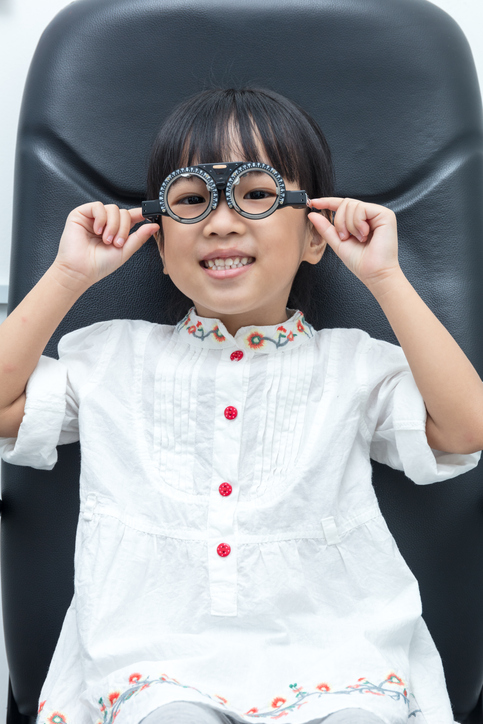 |
|
Offering young myopia an alternative regimen of weekly high-dose atropine might allow more children to maintain a management regimen, this study suggests. Photo: Getty Images. Click image to enlarge. |
Almost 20 years ago, the ATOM study showed that daily administration of atropine at 1% concentration for children with myopia had a significant effect in slowing progression; however, the side effect profile—chiefly photophobia and blurred near vision—was deemed too onerous to warrant adoption of the protocol. Since then, researchers and clinicians have more or less settled on a daily regimen of atropine at a lower concentration, with different studies arguing for or against 0.01%, 0.25% or 0.5%.
Recently, researchers from China wanted to explore the possibility of reviving use of high-dose 1% atropine but on a weekly rather than daily basis, in hopes of reducing adverse effects while achieving comparable efficacy. The Shanghai-based study included 694 participants aged three to 15 (mean age 8.8 years) whose medical records were retrospectively reviewed for documentation of weekly 1% atropine use for more than one year. Both axial length (AL) and spherical equivalent refraction (SER) measurements were recorded at every visit. Follow-up time of one year was reached in 36.9% of patients, two years in 36.0%, three years in 20.6% and four years in 6.5%.
Cumulative change in AL was 0.05mm, 0.24mm, 0.47mm and 0.56mm in the one-year, two-year, three-year and four-year data, respectively, and an approximate 0.2mm elongation per year was observed beginning at the second year of treatment. The authors add that an AL decrease of more than 0.04mm during the initial two months could serve as an indicator to identify fast progressors (AL change >0.2mm/year) over a two-year period, with a sensitivity rate of 0.78 and specificity rate of 0.73.
In the discussion section of their paper on the study for British Journal of Ophthalmology, the researchers expand upon their findings, elaborating that weekly use of 1% atropine resulted in 0.19D/year SER reduction and 0.14mm/year AL increase, with a sustainable suppressive effect over the four-year period. What’s more, the authors add, “Our results also revealed the short-term change characteristics of AL after atropine use are associated with the long-term effect of myopic management, which could help clinicians to early estimate the poor response population to atropine treatment and select more feasible myopia control interventions.”
They further elucidate what these numbers entail. In their study, axial elongation was limited to 0.24mm over two years (0.12mm/year), which they say compares favorably with other research conducted by themselves and others. Due to these comparisons as well as the other data collected, the researchers recommend that, “specifically, those with low myopia, particularly SER within -1.00D, may benefit more from the weekly atropine regimen.”
As the study was retrospective, researchers were not able to document patient experiences of adverse effects and overall satisfaction. However, they speculate on the matter, nothing that “the periodic use of atropine is accompanied by gradually reduced photophobia and near-vision symptoms in the next few days of each cycle,” they wrote. “And myopic children solved the side effects by wearing photochromic and progressive multifocal glasses. Hence, part-time treatment strategy could also be relatively well tolerated for a prolonged time.”
Although clinicians with myopia patients on established regimens can be reassured to maintain such regimens, this research may allow newly identified young myopes to benefit from an alternative approach, the researchers suggest. “[With] excellent slow myopia growth in lower degrees of myopia and younger children, we recommended to commence weekly high-dose atropine treatment in the younger and initial stage of myopia.”
Du L, Ding L, Chen J, et al. Efficacy of weekly dose of 1% atropine for myopia control in Chinese children. Br J Ophthalmol. August 9, 2024. [Epub ahead of print]. |


